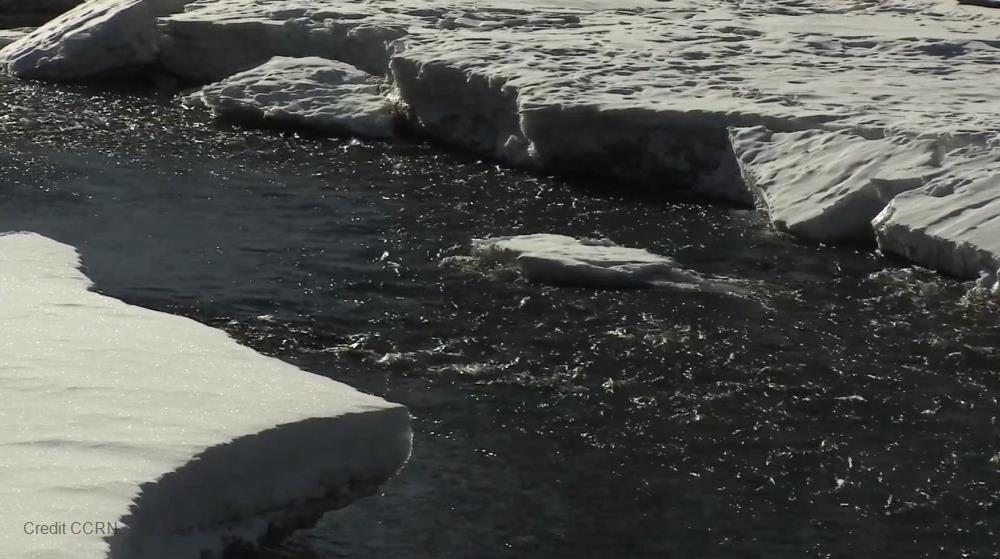
Related items loading ...
Section 1: Publication
Publication Type
Conference Poster
Authorship
Burton Erika A., Katzenback Barbara A., Marjan Patricija, Chiang Gustavo, Bahamonde Paulina, Craig Paul M., Doxey Andrew, Giesy John, Servos Mark R.
Title
Optimizing environmental DNA detection protocols to generate fish presence data in remote freshwater systems
Year
2022
Publication Outlet
AOSM2022
DOI
ISBN
ISSN
Citation
Erika A Burton, Barbara A Katzenback, Patricija Marjan, Gustavo Chiang, Paulina Bahamonde, Paul M Craig, Andrew Doxey, John Giesy, Mark R Servos (2022). Optimizing environmental DNA detection protocols to generate fish presence data in remote freshwater systems . Proceedings of the GWF Annual Open Science Meeting, May 16-18, 2022.
Abstract
To protect freshwater fish communities, basic knowledge of their numbers, distribution, and habitat is required, but this information can be particularly difficult to obtain for remote systems. Remote freshwater systems can experience human impacts but are poorly understood due to lack of access and potential hazards. Rivers draining from the stratovolcano Melimoyu in northern Chilean Patagonia, where limited access, high flows, and considerable river debris makes traditional sampling from boats or wading impractical or dangerous. New biomonitoring techniques such as environmental DNA (eDNA) detection can be used to sensitively and non-invasively obtain data of species presence or even community structure through analysis of water samples. Environmental DNA is DNA derived from organisms but shed into their environment (e.g., via feces, mucous, shed cells). Detection of eDNA may provide an avenue for obtaining data about freshwater communities in remote systems such as Melimoyu. To evaluate the feasibility of eDNA sampling in remote systems, eDNA detection methods were used for three different fish species: invasive brown trout (Salmo trutta) and Atlantic salmon (Salmo salar), and native puye (Galaxias maculatus) in the rivers draining Volcán Melimoyu. Brown trout eDNA was detected at seven sites across four rivers, Atlantic salmon eDNA was not detected at any sample sites, and puye eDNA was detected in one river with high certainty. The efficacy and feasibility of using eDNA detection methods in remote areas was assessed to make recommendations for future eDNA studies at Melimoyu and other remote areas. Establishing best practices for eDNA surveys may allow researcher to gain insight into ecosystems that are poorly characterized and imperiled.
Plain Language Summary
Section 2: Additional Information
Program Affiliations
Project Affiliations
Submitters
|
Erika Burton | Submitter/Presenter | eaburton@uwaterloo.ca | University of Waterloo |
Publication Stage
N/A
Theme
Water Quality and Aquatic Ecosystems
Presentation Format
poster plus 2-minute lightning talk
Additional Information
AOSM2022 Next Generation Solutions to Ensure Healthy Water Resources for Future Generations First Author: Erika A Burton, University of Waterloo, Canada Additional Authors: Barbara A Katzenback, University of Waterloo, Canada. Patricija Marjan, University of Calgary, Canada. Gustavo Chiang, Universidad Andres Bello, Chile. Paulina Bahamonde, Universidad de Playa Ancha, Chile. Paul M Craig, University of Waterloo, Canada. Andrew Doxey, University of Waterloo, Canada., John Giesy, University of Saskatchewan, Canada. Mark R Servos, University of Waterloo, Canada


 GWFNet
GWFNet Master
Master Data
Data Research
Research Map
Map
 Advanced
Advanced . . .
. . .

 Metadata Editor
Metadata Editor
 Record List
Record List
 Alias List Editor
Alias List Editor
 Legacy sites
Legacy sites